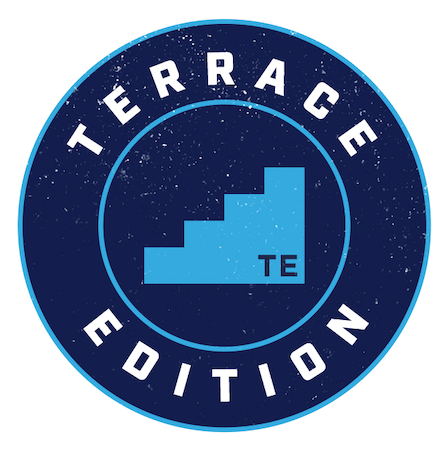Superclásico Siempre

Words: Niek Jansen
Images: Niek Jansen
Boca Juniors vs River Plate is one of the biggest, if not the biggest, derby in the world. A battle between the two most popular and successful clubs from Argentina.
It can rightly be called a Superclásico instead of a Clásico. Emotion, passion and pride come together during this intense battle between the two arch rivals from Buenos Aires.
Both clubs saw the light of day in the same and well-known neighbourhood La Boca, a real working-class neighbourhood close to the port of Buenos Aires.
Due to the location of the port, many immigrants from mainly Europe came to La Boca in the past in search of a better life.
©Niek Jansen/ Terrace Edition. Boca Juniors vs River Plate. Argentina.
The Italian region of Liguria, which includes the city of Genoa, saw many people leave for work in La Boca.
River Plate was founded in 1901 and was formed from a merger between the clubs Santa Rosa and La Rosales. The club was named River Plate after a club member had seen British dock workers in the harbour who had stopped their work to play football.
There was a sign saying The River Plate, the English name for the Rio de La Plata river and it was decided to use that name for the new club.
Boca Juniors on the other hand was founded in 1905 and was founded by boys of Italian origin in Genoa from the La Boca neighbourhood, which is now a tourist attraction because of its colourful houses, tango (clubs), Italian taverns and of course Boca Juniors and La Bombonera.
In 1925 however, River Plate moved to the wealthy Núñez neighbourhood in the North of Buenos Aires, which made Boca Juniors known as a working class club with many supporters coming from the Italian immigrant community, who were also the founders of the creation of Boca Juniors.
©Niek Jansen/ Terrace Edition. Boca Juniors vs River Plate. Argentina.
The nickname Xeneizes (Genoese) was therefore not surprising. River Plate became known by the nickname Los Millonaires (The Millionaires), with a so-called upper-class fan base. It is no longer so black and white these days and both clubs have supporters from all social classes of society.
But, let’s get to the present day and the 215th Superclasico, that had people so ramped up, it was no surprise the match was a sell out at La Bombonera.
Going to the stadium early for a good seat was therefore the logical consequence.
About four hours before the match I was already present in the La Boca district for a so-called ‘Previa’, where I mingled with the Boca Juniors supporters for a bite to eat and a drink.
It was clear that an important match was going to be played. After soaking up the atmosphere, it was time to go to the stadium more than two hours in advance. But not before I first bought a bucket hat for seven Euros on the street.
©Niek Jansen/ Terrace Edition. Boca Juniors vs River Plate. Argentina.
The bucket hat would save my life that afternoon in the sun in about 25 degrees. The access control went smoothly and I found my standing place on the tribuna Sur (South Stand) while the stadium was already well filled.
I took in the stadium and it was nothing but enjoyment. The shape, the colours, the steep stands.
Everything about this stadium is right. A barely filled La Bombonera is impressive, let alone a more than sold out La Bombonera in the Superclásico.
Before the match the supporters made themselves heard and also the tribuna Norte, where the Barra Brava (fierce group) of Boca Juniors call home, was in good voice.
The ‘Jugador Número 12’ (twelfth man) covers the entire tribuna Norte and La Doce forms an impressive whole.
©Niek Jansen/ Terrace Edition. Boca Juniors vs River Plate. Argentina.
In the end the stadium was already completely full an hour before kick-off and the atmosphere was eclectric way before the players entered the field.
River Plate, who were preparing for the return match in the quarter-finals of the CONMEBOL Libertadores on 25 September against Chilean Colo Colo (whom they won 1-0 and therefore qualified for the semi-finals) started with Miguel Borja, Marcos Acuña, Germán Pezzella and Ignacio Fernández on the bench, quickly took the lead 0-1 via Manuel Lanzini (also ex-West Ham United).
The level of the match was not worth writing home about after that early goal and old-fashioned ‘anti-football’ was the result.
The atmosphere was therefore somewhat less, but still impressive. In the end, it was River Plate that had the final say in this Superclásico, although Boca Juniors seemed to score the equalizer in the 97th minute.
©Niek Jansen/ Terrace Edition. Boca Juniors vs River Plate. Argentina.
Referee Nicolás Ramírez rightly disallowed the goal, as Milton Giménez used his hand when he worked the ball past goalkeeper Franco Armani.
Everyone in La Bombonera was furious and that resulted in a flood of flags on the field and players who went to Ramírez to complain. It resulted in Cristian Lema being shown a red card (two yellows)and tempers remained high after the game.
The defeat hit both the supporters and players of Boca Juniors hard. Goalkeeper Sergio Romero wanted to attack a supporter who had insulted him just outside the catacombs after the game. Boca Juniors then decided to suspend Romero for two matches.
This was never going to be calm game and it left the heart beating hard long into the night.
©Niek Jansen/ Terrace Edition. Boca Juniors vs River Plate. Argentina.
©Niek Jansen/ Terrace Edition. Boca Juniors vs River Plate. Argentina.
©Niek Jansen/ Terrace Edition. Boca Juniors vs River Plate. Argentina.
©Niek Jansen/ Terrace Edition. Boca Juniors vs River Plate. Argentina.
©Niek Jansen/ Terrace Edition. Boca Juniors vs River Plate. Argentina.
©Niek Jansen/ Terrace Edition. Boca Juniors vs River Plate. Argentina.
Niek is on X: @niek92jansen
















